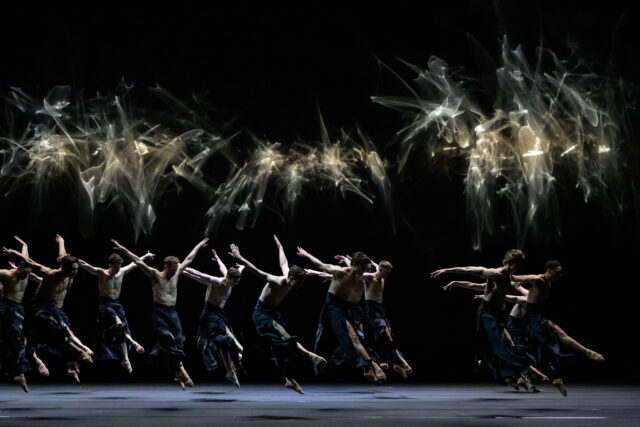
For the English version, please, scroll down
BERLINO – Il 28 aprile 2024, presso la Staatsoper Unter den Linden, ha debuttato Overture, coreografia originale di Marcos Morau per lo Staatsballet Berlin e, a seguire, è andato in scena Angels’ Atlas, coreografia creata nel 2020 per il National Ballet of Canada da Crystal Pite.
Il coreografo spagnolo, artista residente allo Staatsballet per il 2024, ha presentato un lavoro su musica di Gustav Mahler.
Su un palco ‘oscurato’ da un velo nero, i ballerini si muovono intorno a una maestosa colonna che giace orizzontalmente al centro della scena. I movimenti sono caratterizzati da veloci oscillazioni della testa e da piccole scosse che sembrano percorrere i loro corpi. La fluidità della danza è resa ‘spigolosa’ dalle braccia e gambe piegate o dai piedi in flex. In alcuni momenti, grazie alle onde di movimento (domino motion) tipiche dei lavori di Morau, i danzatori sembrano parti di un ingranaggio. In questa prima parte dello spettacolo, la coreografia non serve a raccontare una storia, bensì a esaltare l’architettura dello spazio.
Quando si solleva il velo, cambiano la scenografia, l’atmosfera e i costumi dei ballerini.
Sul palco ora ci sono sedici colonne. Dai costumi adamitici della prima scena, si passa a delle divise che ricordano quelle di un college. Da qui la narrazione è completamente diversa. Si assiste a corse, giochi di gruppo o romantici ‘duetti’, scene di sfida, forse anche di bullismo, di cameratismo e goliardia. Poi molte delle colonne spariscono di nuovo e sul palco ne restano solo alcune poste su una pedana rotante che regala altre suggestive immagini di danza.
Overture, come il titolo promette, è un ottimo inizio.
Certo, le coreografie a cui Marcos Morau ci ha abituato con la Veronal hanno una spettacolarità e una drammaturgia che un po’ manca in questo pezzo per lo Staatsballet, però si riconosce lo stile e si apprezza l’ottimo risultato ottenuto.

Dopo l’intervallo si ritorna in sala per assistere a Angels’ Atlas.
La coreografa e danzatrice canadese Crystal Pite, ex ballerina del British Columbia e del Frankfurt Ballet di William Forsythe, propone un pezzo su musiche di Owen Belton. Pur essendo un lavoro molto diverso da altri suoi pezzi come il famosissimo The Statement (2016) creato per la NDT, anche in questa opera, all’apparenza molto ‘lirica’, non mancano interessanti intuizioni coreografiche soprattutto rispetto a spazio e luci.
Il fondale è come un quadro in continuo cambiamento.
Le luci proiettate sullo sfondo, infatti, sono molto suggestive. Accompagnano l’azione sul palco, contribuendo a creare un’atmosfera rarefatta e sognante. La danza, ampi e lenti movimenti eseguiti in sincro da tutti i ballerini, mette in risalto la bravura e le doti dei membri dello Staatsballet. Dalla prima scena corale, si passa a un duo etereo e passionale. Poi, per un attimo, rimane solo un ballerino in scena e, sempre con cambi di luci, si passa a un nuovo duo in cui lei sembra piangere lui.
Il palco come una scacchiera.
Quando tutti i ballerini tornano in scena, cambia la musica e anche lo stile. Ora il movimento è più contemporaneo, fatto di una gestualità che si ripete ritmicamente. Ma la cosa più interessante è l’utilizzo dello spazio. Sul lato sinistro i ballerini sono sdraiati a terra, mentre sul destro sono in piedi. Poi la divisione dei ballerini sul palco diventa ribalta e proscenio per cambiare ancora quando si dispongono nelle due diagonali, e poi tutti a sinistra e tutti a destra del palco.
Da questo momento, sino alla fine, si susseguono straordinari momenti di danza.
Quando un danzatore cammina al limitare del fondale, con la luce che sembra camminare con lui, si assiste ad altri cambi. Da un solo si passa a un energico duo. Poi tutti gli uomini sono sul palco. Segue un momento corale e, quando si invertono i ruoli e ‘lui’ sembra piangere ‘lei’, si crea una sorta di processione. Lentamente, uno dopo l’altro, i ballerini finiscono a terra. Poi piccoli gruppi, tra lift e discese, si alternano sul palco, fino al meraviglioso duo che chiude la serata.
Con Angels’ Atlas, lo Staatsballet riesce a esprimere e a dare il meglio di sé. Musica, danza, interpretazione, cambi di luci e gestione dello spazio contribuiscono tutti in egual misura a decretare il successo di questa serata che riceve lunghissimi minuti di standing ovation.
photo

Berlin_On April 28, 2024, Overture, an original choreography by Marcos Morau for the Staatsballet Berlin, debuted at the Staatsoper Unter den Linden and, following this, Angels’ Atlas, a choreography created in 2020 for the National Ballet of Canada by CrystalPite, was on.
The Spanish choreographer, artist in residence at the Staatsballet for 2024, presented a work on music by Gustav Mahler.
On a stage ‘obscured’ by a black veil, the dancers move around a majestic column that lies horizontally at the center of the stage. The movements are characterized by rapid head oscillations and small tremors that seem to travel through their bodies. The fluidity of the dance is made ‘edgy’ by the bent arms and legs or by the flexed feet. In some moments, thanks to the waves of movement (domino motion) typical of Morau’s works, the dancers seem to be like parts of a gear. In this first part of the show, the choreography doesn’t tell a story, but rather enhances the architecture of the space.
When the veil is lifted, the scenography, the atmosphere and the dancers’ costumes change.
There are now sixteen columns on the stage. From the adamic costumes of the first scene, we move on to uniforms that recall those of a school. From here the narrative is completely different. We seedancers chasing each otherplayfully, romantic ‘duets’, scenes of challenge, perhaps even of bullying, of camaraderie and joking. Then many of the columns disappear again and only a few remain on the stage placed on a rotating platform which suggest other choreographic figures.
Overture, as the title promises, is a great start.
Of course, the choreographies that Marcos Morau accustomed us to, the ones created for his dance company the Veronal, have a spectacularity and dramaturgy that is somewhat lacking in this piece for the Staatsballet. And yet his signature can be easily recognized and enjoyed in the outstanding result.
After the break, it’s time for Angels’ Atlas.
The Canadian choreographer and dancer Crystal Pite, former dancer of British Columbia and William Forsythe’s Frankfurt Ballet, offers a piece on music by Owen Belton. Despite being a very different work from her other pieces such as The Statement (created for NDT in 2016), even this work, apparently very ‘lyrical’, doesn’t lack interesting choreographic intuitions, especially with regards to space and lights.
The backdrop is like a constantly changing painting.
The lights projected on the background, in fact, are very suggestive. They accompany the action on stage, helping to create a rarefied and dreamy atmosphere. The dance, large and slow movements performed in synchrony by all the dancers, highlights the skill and talents of the members of the Staatsballet. From the first choral scene, we move on to an ethereal and passionate duo. Then, for a moment, only one dancer remains on stage until, with changes in lighting, a new duo unfolds in which‘she’ seems to mourn ‘him’.
A stage like a chessboard.
When all the dancers return to the stage, the music changes and also the style. Now the movementsare more contemporary. They are made of gestures that are repeated rhythmically. But the most interesting thing is the organization of space. On the left side the dancers are lying on the ground, while on the right they are standing. Then the repartition of the dancers on the stage shifts to the front and back, only to change again when they arrange themselves in the two diagonals, and once more when they all stand either to the left or to the right side of the stage.
From this moment until the end, extraordinary moments of dance follow one another.
When a dancer walks at the edge of the backdrop, with the light appearing to walk with him, we can appreciate other changes. From a solo we move on to an energetic duo. Then all the men are on stage. A choral moment follows and, when the roles are reversed and ‘he’ seems to mourn ‘her’, all the dancers stand in one line like in a sort of procession. Slowly, one after the other, theygo on the ground. Then small groupsalternate on stage, until the wonderful duo that closes the evening.
With Angels’ Atlas, the Staatsballet manages to express and give its best. Music, dance, interpretation, lighting changes and space management all contribute equally to the success of this evening which received very long minutes of standing ovations.












































